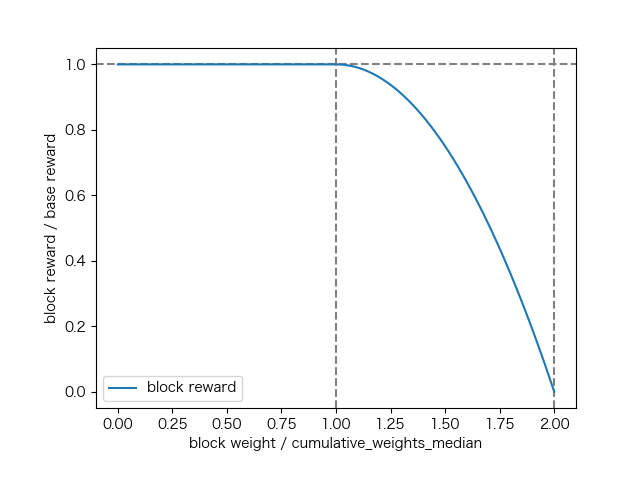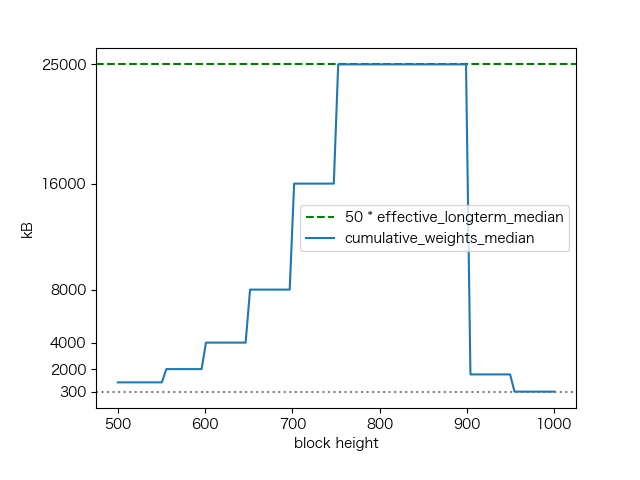Monero dynamic block weight is an interesting design. Instead of a fixed supply of transaction space, Monero uses the history blocks to determine the dynamic limit and use the median to control the increasing pace.
The major reference of this article is chapter 7.3 Money supply in the book Zero to Monero: Second Edition.
Block Weight Limit
The current block’s cumulative_weights_median is the base limit for the next block. The max block weight of the next block is 2 ∗ cumulative_weights_median and the block reward decays when the block weight is greater than cumulative_weights_median.

cumulative_weights_medianThe definition of cumulative_weights_median is
cumulative_weights_median = max{
300kB,
min{
max{
300kB,
median_100blocks_weights
},
50 ∗ effective_longterm_median
}
}
The item 300kB is the lower bound of cumulative_weights_median, which can be removed to simplify the formula.
The term effective_longterm_median changes slowly and can be considered as a constant here. It acts as the upper bound.
The value of cumulative_weights_median indeed is the median of the last 100 blocks weights clamped between 300kB and 50 * effective_longterm_median. In turn, the block weight is restricted by cumulative_weights_median.
The base limit cumulative_weights_median increases when there are at least 50 in the recent 100 blocks which weight is greater than cumulative_weights_median, indicating that at least half of the miners are willing to take the block reward penalty. Miners are incentivized to take the penalty because the transaction fees can cover the loss.
If the network runs at full load, cumulative_weights_median doubles every 50 blocks and will reach the upper bound 50 * effective_longterm_median eventually.
Pay attention that cumulative_weights_median falls immediately when the network load drops. If there are 50 in the last 100 blocks which weight is less than 300kB, cumulative_weights_median will become 300kB. Maintaining cumulative_weights_median at a value higher than 300kB requires continuous transaction traffic.

cumulative_weights_median changesLong Term Limit
The value of effective_longterm_median caps the max block weight in the short term. As the name suggests, it is the median of the longterm_block_weight of the last 100,000 blocks.
effective_longterm_median = max { 300kB, median_100000blocks_longterm_weights }
The definition longterm_block_weight is
min { block_weight, 1.4 ∗ previous_effective_longterm_median }
The value of effective_longterm_median is the median of the last 100,000 blocks weights clamped between 300kB and 1.4 * previous effective_longterm_median. Same with cumulative_weights_median, it increases slowly and drops sharply.
If all the blocks weights are greater than 1.4 ∗ previous_effective_longterm_median, effective_longterm_median rises by 40% every 50,000 blocks.